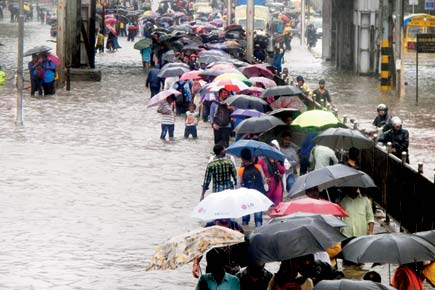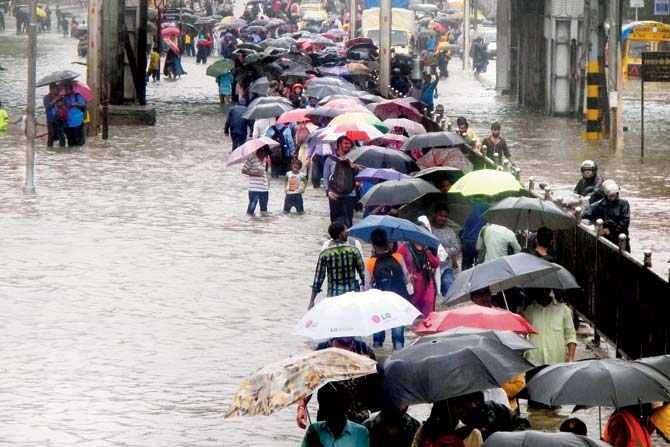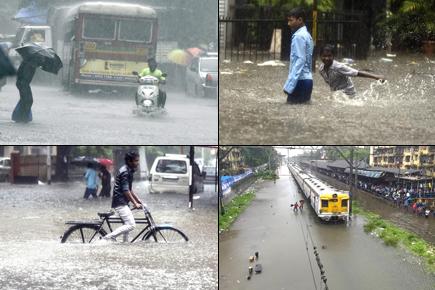The rainfall the Mumbai received on Tuesday, August 29 was merely one-third of what the city had witnessed on July 26, 2005, so why was the flooding just as bad this year? mid-day decodes the answer


Representational picture
ADVERTISEMENT
It was like 26/7 all over again for Mumbai on Tuesday, as Mumbai drowned under nearly 300 mm of rainfall -- the worst downpour since the 2005 deluge. While the BMC is patting itself on the back for better disaster management this time around, the fact is, things could have been a lot worse. The rainfall on August 29 was merely one-third of what Mumbai had received on July 26, 2005, so why was the flooding just as bad this year?
New and improved system
While Mumbai’s disaster control unit was set up in 1999 but had a mere strength of 12 staffers. During the 2005 deluge, the small unit was overwhelmed by the sheer scale of the disaster. Learning from the tragedy of 26/7, the BMC set up a 24x7 Disaster Management Cell with a strength of 72 staffers working in three shifts around the clock. The Cell is equipped with 30 phone lines for its 1916 helpline, along with a GIS control centre, 58 wireless sets, 51 MTNL hotlines, HAM radios for back-up. It also gets a live feed from the city’s 4,500 CCTV cameras.
Also read - Can't control nature but haven't moved an inch: HC on Mumbai floods
#Fail, again
After 26/7, a fact-finding committee headed by hydrologist Madhav Chitale had recommended a complete overhaul of the city’s British-era drains, as well construction seven pumping stations. After 12 years, the project, named BRIMSTOWAD, is only 80% complete. The Mahul pumping station remains only on paper, as authorities cite land issues.
Also read - Mumbai rains: With risk of water borne diseases reigning high, BMC issues warning
Filthy drains were a major problem in 2005, and it was no different this year. After the Rs 150-crore desilting scam came to light in 2015-16, several contractors were penalised and blacklisted. This year, not a single contractor came forward for the job, forcing the BMC to do it with the help of local ward staffers and NGO workers. But it’s questionable how effective this was, without the right expertise.
One of the biggest causes of the 2005 floods was plastic garbage that blocked storm-water drains and natural waterways, including Mithi river. The Madhav Chitale panel had warned against the use of plastic, particularly the danger of littering it in open drains, but the civic body has failed to resolve this issue.
Lessons learnt
>> Disaster Cell issued early warnings about the rising water level during high tide
>> BMC advised offices to allow employees to leave early
>> In the evening, civic body warned commuters to stay home or in office to avoid getting stuck in the floods and traffic
>> BMC’s sister organisation, BEST Undertaking, pressed 100 extra services into operation to get people home
>> Mumbai Police was out all night, helping citizens in distress
>> 229 dewatering pumps were deployed; all pumping stations were operational to push water out faster
>> BMC issued a health advisory to boil drinking water, and take antibiotics after wading in floodwater

You may also like - Mumbai Rains photos: Heavy showers drown city
 Subscribe today by clicking the link and stay updated with the latest news!" Click here!
Subscribe today by clicking the link and stay updated with the latest news!" Click here!






